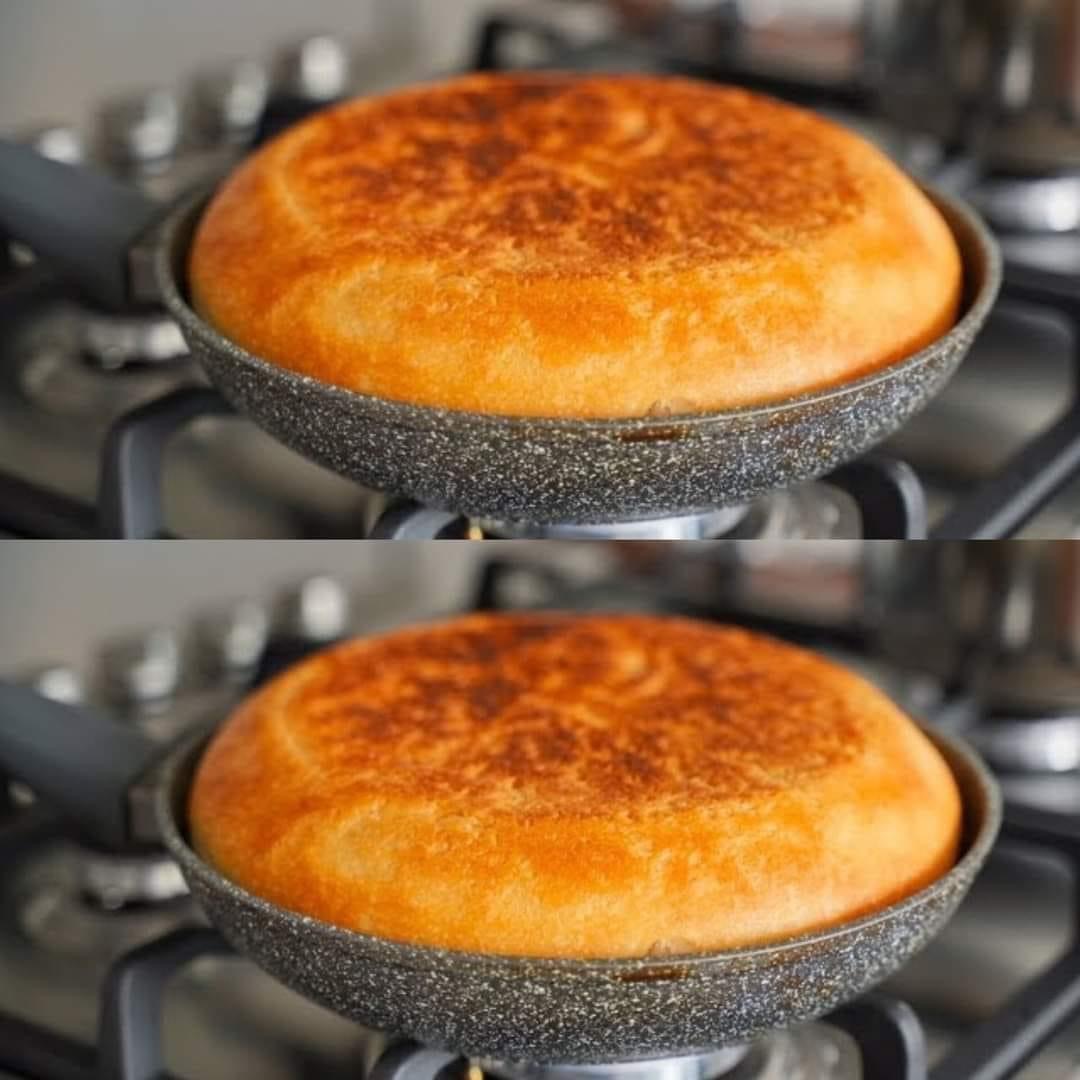Homemade Stovetop Bread Recipe: Easy and Delicious White Bread
There’s something incredibly satisfying about baking your own bread at home. This homemade stovetop bread recipe is simple, requiring minimal ingredients and effort, yet yields deliciously soft and fluffy white bread. Perfect for those who might not have an oven or just want to try something different, this stovetop method will become a staple in your baking repertoire.
Ingredients
- 3 cups all-purpose flour
- 1 tablespoon sugar
- 1 teaspoon salt
- 1 packet (2 1/4 teaspoons) active dry yeast
- 1 cup warm water (about 110°F or 43°C)
- 2 tablespoons olive oil (plus extra for greasing)
- Extra flour for dusting
Instructions
Step 1: Activate the Yeast
- Combine Ingredients:
- In a small bowl, combine the warm water, sugar, and yeast. Stir gently to dissolve the yeast and let it sit for 5-10 minutes until it becomes frothy and bubbly. This indicates that the yeast is active and ready to use.
Step 2: Mix the Dough
- Prepare the Flour Mixture:
- In a large mixing bowl, combine the flour and salt. Create a well in the center of the flour mixture.
- Combine Wet and Dry Ingredients:
- Pour the yeast mixture and olive oil into the well. Mix until the ingredients come together to form a dough. If the dough is too sticky, add a bit more flour. If it’s too dry, add a little water, a tablespoon at a time.
Step 3: Knead the Dough
- Knead the Dough:
- Turn the dough onto a floured surface. Knead the dough for about 8-10 minutes until it becomes smooth and elastic. Proper kneading is crucial for developing the gluten, which gives the bread its structure.
Step 4: Let the Dough Rise
- First Rise:
- Place the dough in a greased bowl, turning it once to coat with oil. Cover the bowl with a cloth or plastic wrap and let the dough rise in a warm place for about 1 hour, or until it has doubled in size.
Step 5: Shape the Dough
- Shape the Dough:
- Punch down the risen dough to release any air bubbles. Place it on a floured surface and shape it into a round loaf or divide it into smaller portions for rolls.
Step 6: Preheat the Pan
- Preheat the Pan:
- Heat a large, heavy-bottomed skillet or non-stick pan over medium-low heat. Lightly grease the pan with olive oil to prevent sticking.
Step 7: Cook the Bread
- Cook the Bread:
- Place the shaped dough into the preheated pan. Cover the pan with a lid or foil to create an oven-like environment. This helps trap the heat and steam, cooking the bread evenly. Cook for 10-12 minutes on one side until it turns golden brown. Flip the bread and cook for another 8-10 minutes on the other side until it is golden brown and sounds hollow when tapped.
Step 8: Cool and Serve
- Cool the Bread:
- Remove the bread from the pan and let it cool on a wire rack. This prevents the bottom from becoming soggy. Slice the bread and enjoy it warm with your favorite toppings, such as butter, jam, or honey.
Tips for Perfect Stovetop Bread
- Proper Yeast Activation: Ensure your water is at the right temperature (around 110°F or 43°C) to activate the yeast. Too hot, and it will kill the yeast; too cold, and it won’t activate.
- Consistent Dough: Adjust the flour and water as needed while mixing the dough. The dough should be soft and slightly sticky but not overly wet.
- Kneading Technique: Knead the dough thoroughly to develop the gluten. This gives the bread its chewy texture and structure.
- Temperature Control: Maintain a steady, medium-low heat while cooking to prevent the bread from burning on the outside while remaining undercooked inside.
- Creating Steam: Covering the pan helps to mimic an oven environment by trapping steam, which is essential for even cooking.
FAQs
Can I use whole wheat flour instead of all-purpose flour?
Yes, you can substitute whole wheat flour for all-purpose flour. Keep in mind that whole wheat flour absorbs more water and can result in a denser bread, so you might need to adjust the water content.
What if my dough doesn’t rise?
If your dough doesn’t rise, it could be due to inactive yeast, incorrect water temperature, or a cold environment. Ensure your yeast is fresh, the water is the correct temperature, and place the dough in a warm area to rise.
Can I add herbs or other flavorings to the dough?
Absolutely! You can add herbs like rosemary, thyme, or garlic to the dough for added flavor. Mix them in during the initial dough mixing stage.
How do I store leftover bread?
Store leftover bread in an airtight container at room temperature for up to 3 days. For longer storage, you can freeze the bread. Wrap it tightly in plastic wrap and place it in a freezer bag.
Can I use this recipe to make rolls?
Yes, you can divide the dough into smaller portions to make rolls. Follow the same instructions, adjusting the cooking time as needed since smaller rolls will cook faster.
Is it necessary to use a heavy-bottomed skillet?
A heavy-bottomed skillet ensures even heat distribution, which is crucial for cooking bread evenly. If you don’t have one, a non-stick pan can work, but keep a close eye on the heat to avoid burning.
With these simple steps and tips, you can enjoy delicious, homemade stovetop bread that’s perfect for any meal. Happy baking!

